In which Sid and Doris, cool as some cucumbers, find the Postal Palace and the Telegraph Museum.
Today is Museums day and we have a splendid line up which is soon usurped by serendipitous discoveries.
First plan is to go to the Templo Mayor museum via a trip around the square. The enormous flag is not flying but a small police detachment is guarding the mast in case …. anyway, they are guarding it. The Secretariat of Security Public, the city’s own force, of maybe 90,000, puts out armed squads of six or eight in pick up trucks with roll cages and mid mounted benches. (These are not eligible for conveyance of the day.) Riot police with plastic armour and shields lurk in the shade though to be fair we are just by the parliament building. We do not have pictures.
As we walked down a locals’ shopping street a look out’s whistle blew and suddenly every pavement stall on a blanket was whisked into an alley or shop as the police car went by. Then we were back to normal. The Arab Spring started when ordinary people got fed up with the occupying forces in their own country stopping them making their tiny living.
The Templo Mayor was the Mexica’s main religious site with temples to Gods of wind, rain, agriculture and war. There are seven layers going back to the 14th century. The most recent had just been finished when the Spanish arrived and knocked it down to show the Aztecs who was boss and to build a cathedral just a bit bigger. The open air site now has excellent models of how archaeologists believe the whole area was laid out. The Museum is shut.
 We detoured into the Photographic Museum, which was dimly-lit and somewhat forgettable, although in a display about the early Mexican archaeological efforts Carl Lumholtz’s mule did get an entry for Conveyance of the Day.
We detoured into the Photographic Museum, which was dimly-lit and somewhat forgettable, although in a display about the early Mexican archaeological efforts Carl Lumholtz’s mule did get an entry for Conveyance of the Day.
Walking towards the Palacio de Bellas Artes (I think you could learn to speak Spanish, given how easy it is to read) we stop for lemonade. And from the terrace we spot the Museo del Telegrafo (see, you can read it).
Now Sid and Doris are as interested in the Aztecs as almost anyone, but while cute with a sacrifice they didn’t invent Morse code or lay a cable from Ireland to Canada. The conveyance of the day was actually won by The Great Eastern with sails and paddle wheels that laid that vairy long cable.
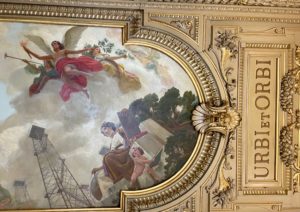 The museum was put up in 1900 or so on a steel frame, and yet the outside is all neo classical gubbins and the inside is lavishly decorated with marble and splendid ceiling paintings.
The museum was put up in 1900 or so on a steel frame, and yet the outside is all neo classical gubbins and the inside is lavishly decorated with marble and splendid ceiling paintings.
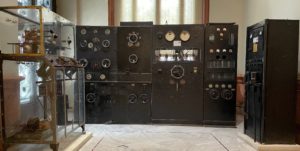 Anyway the exhibits take the story from Mexico’s mid 19th century railway telegraph and telegrams, through ‘phones, Marconi and radio transmission up to Telex. There are electro-mechanical exhibits with valves bigger than a Marshall. There is a fabulous control panel.
Anyway the exhibits take the story from Mexico’s mid 19th century railway telegraph and telegrams, through ‘phones, Marconi and radio transmission up to Telex. There are electro-mechanical exhibits with valves bigger than a Marshall. There is a fabulous control panel.
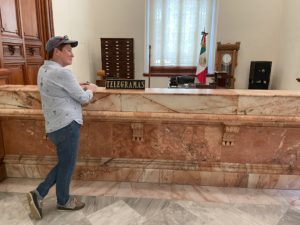 And a telegraph office for sending telegrams and giro money. The government telegraph teams, still using Morse, were disbanded in 1992. It is nerdy stuff.
And a telegraph office for sending telegrams and giro money. The government telegraph teams, still using Morse, were disbanded in 1992. It is nerdy stuff.
Now to the Postal Palace which we were not even looking for. It is both palacial and postal, and it took us a surprisingly long time to work out that it is still a real post office. [It is worth zooming in to the pictures to see the detail – there should be a little magnifying glass if you hover over them – D.]
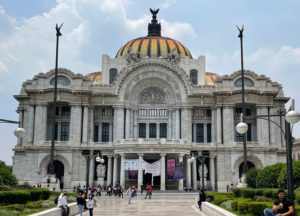 And so to the formal goal of the day, the Bellas Artes and the Architectural Museum. Here is what it looks like from the outside, sort of Art Nouveau – especially the domes.
And so to the formal goal of the day, the Bellas Artes and the Architectural Museum. Here is what it looks like from the outside, sort of Art Nouveau – especially the domes.
A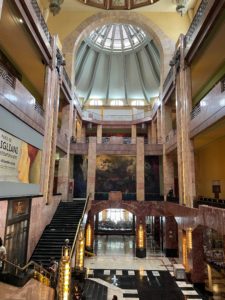 nd here is the Art Deco interior of the world. This weird concoction should be an item in the Archtectural Museum upstairs, but that is shut. Perhaps it turned out like this because it was designed in 1904 but in 1913 building stopped so the labourers could go to the Revolucion. Like any stalled project it was hard to restart. They got going again in 1934. Could explain a lot.
nd here is the Art Deco interior of the world. This weird concoction should be an item in the Archtectural Museum upstairs, but that is shut. Perhaps it turned out like this because it was designed in 1904 but in 1913 building stopped so the labourers could go to the Revolucion. Like any stalled project it was hard to restart. They got going again in 1934. Could explain a lot.
Mostly people come here to see the large paintings by Rivera and Siqueros. The main Rivera picture is a complicated story contrasting the war mongering and decadent rich with the pure-hearted worker-proponents of Trotskyite international socialism as per the Fourth International. Socialism would be achieved democratically and had to be international because capitalism was, yet Stalin disagreed and would build socialism in one country. And in the next few years would show just what that meant for Ukrainians and Russians alike.
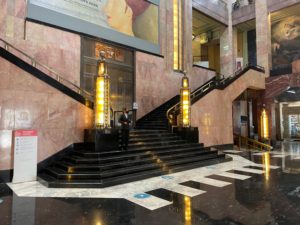 Still, it was all a long time ago and its all different now. For instance the Cheka is now called the FSB. So Sid and Doris marvel at the Odeon style Art Deco, then go for an ice cream.
Still, it was all a long time ago and its all different now. For instance the Cheka is now called the FSB. So Sid and Doris marvel at the Odeon style Art Deco, then go for an ice cream.
PS. The Mexicans are very serious about their Postres – even the Maccy D’s have a dedicated Postres counter.

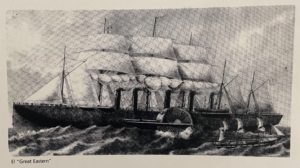
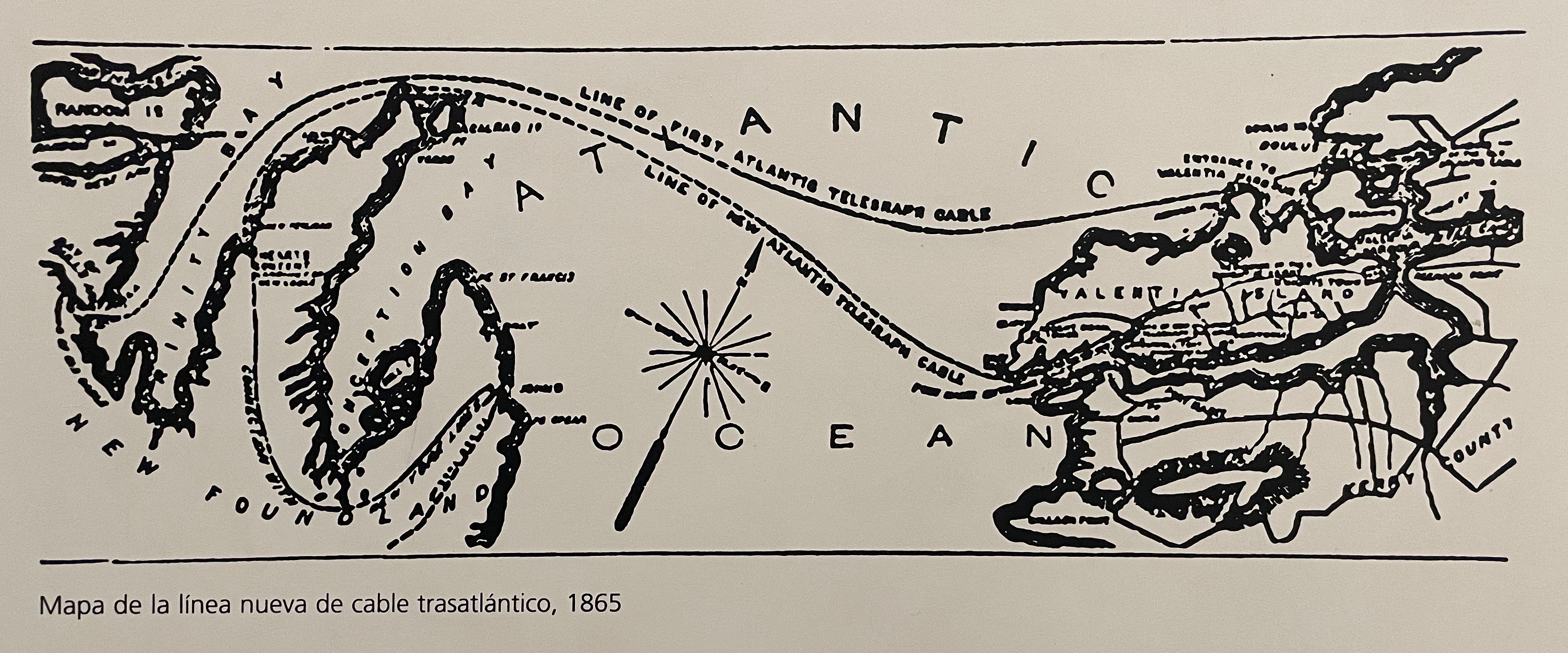
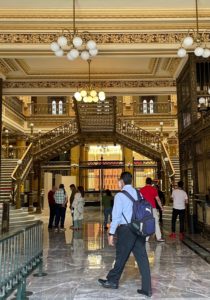
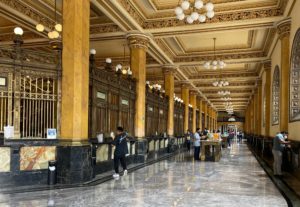
The Odeon style Art Deco, in this case, involves stone from various quarries. It seems the architects could not agree on which to use, or maybe various regions of Mexico needed to be represented? Maybe over time they got better deals in different places. “So? Whatcha got in granite this month?” En español, por supuesto…